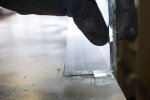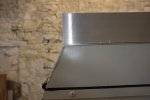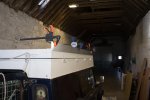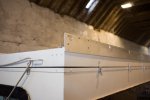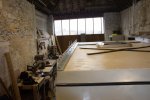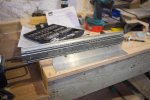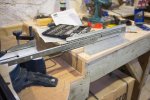Alloy arrived today. BIG packages!

So here's the intended design for the clip-in sides. This H profile is riveted to the top of the panels.
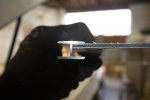
The back of the rivet will be concealed in the lower channel of the H and the upper channel fits the edge of the lifting roof with the rubber seal on it perfectly, when clipped up it should be fairly waterproof - see two pics below.
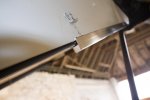
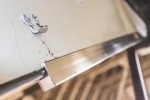
Then at the sides the flanged U channel will be riveted on to the back panel (which will be hinged across its width to make it smaller for storage) and when it is offered up it's U channel will sit over the sides.
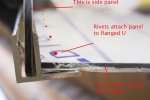
Rubber U edging fitted on the alloy panel will make the joint waterproof when inserted into the slot. This is it fitted onto a sample of the alloy panels.
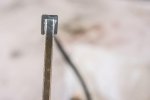
This might seem a fiddle - having to store and install the panels, but it's a good way to have a versatile setup where the fabric sides are used when the weather is good and lots of air and light inside is desirable, but if it gets windy and cold, wet or snowy they can be easily clipped in to make the whole vehicle substantially more weather-resistant and warm. It does not matter if the panels get wet or dirty either as they are installed outside the fabric sides and with a 25mm gap between them and the inner fabric. There are several storage options for them - on the roof in the area above the cab forward of the roof hatch or on cargo rails running along the side (or a combination of both). Anyway I've bought the stuff for them so I'm committed now!

So here's the intended design for the clip-in sides. This H profile is riveted to the top of the panels.

The back of the rivet will be concealed in the lower channel of the H and the upper channel fits the edge of the lifting roof with the rubber seal on it perfectly, when clipped up it should be fairly waterproof - see two pics below.


Then at the sides the flanged U channel will be riveted on to the back panel (which will be hinged across its width to make it smaller for storage) and when it is offered up it's U channel will sit over the sides.

Rubber U edging fitted on the alloy panel will make the joint waterproof when inserted into the slot. This is it fitted onto a sample of the alloy panels.

This might seem a fiddle - having to store and install the panels, but it's a good way to have a versatile setup where the fabric sides are used when the weather is good and lots of air and light inside is desirable, but if it gets windy and cold, wet or snowy they can be easily clipped in to make the whole vehicle substantially more weather-resistant and warm. It does not matter if the panels get wet or dirty either as they are installed outside the fabric sides and with a 25mm gap between them and the inner fabric. There are several storage options for them - on the roof in the area above the cab forward of the roof hatch or on cargo rails running along the side (or a combination of both). Anyway I've bought the stuff for them so I'm committed now!


